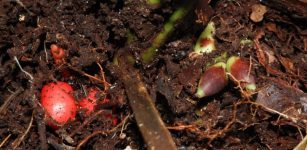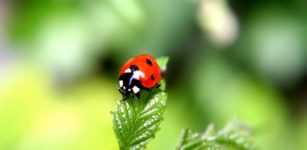Pothos Ivy – This Plant Can Clean Your Home’s Air
Eddie Gonzales Jr. – MessageToEagle.com – Having good and clean air in our home is always appreciated. Using air filters to keep offending allergens and dust particles at bay is an excellent idea, but some hazardous compounds are too small to be trapped in these filters.
Now there is a plant called Pothos Ivy that has been genetically modified and can remove chloroform and benzene from the air around it making your air much cleaner. Both benzene and chloroform exposure have been linked to cancer.
Credit: Washington University
According to researchers at the University of Washington who successfully engineered the houseplant, also hope they can increase the plants’ capabilities by adding a protein that can break down another hazardous molecule found in home air: formaldehyde, which is present in some wood products, such as laminate flooring and cabinets, and tobacco smoke.
Currently, the modified plants express a protein, called 2E1, that transforms these compounds into molecules that the plants can then use to support their own growth.
“People haven’t really been talking about these hazardous organic compounds in homes, and I think that’s because we couldn’t do anything about them,” said senior author Stuart Strand, who is a research professor in the UW’s civil and environmental engineering department. “Now we’ve engineered houseplants to remove these pollutants for us.”
See also:
10 Fascinating Facts About Plants
Talk To Your Plants – You Help Them Grow Better!
Catnip “Catmint” Has Remarkable Effect On Cats – Why?
The whole process took more than two years. Researchers then tested how well their modified plants could remove the pollutants from air compared to normal pothos ivy. They put both types of plants in glass tubes and then added either benzene or chloroform gas into each tube. Over 11 days, the team tracked how the concentration of each pollutant changed in each tube.
For plants in the home to be able to effectively remove hazardous molecules from the air, they would also need to be inside an enclosure with something to move air past their leaves, like a fan. Credit: Mark Stone/University of Washington
For the unmodified plants, the concentration of either gas didn’t change over time. But for the modified plants, the concentration of chloroform dropped by 82 percent after three days, and it was almost undetectable by day six. The concentration of benzene also decreased in the modified plant vials, but more slowly: By day eight, the benzene concentration had dropped by about 75 percent.
In order to detect these changes in pollutant levels, the researchers used much higher pollutant concentrations than are typically found in homes. But the team expects that the home levels would drop similarly, if not faster, over the same time frame.
Plants in the home would also need to be inside an enclosure with something to move air past their leaves, like a fan, Strand said in a press statement.
“If you had a plant growing in the corner of a room, it will have some effect in that room,” he said. “But without air flow, it will take a long time for a molecule on the other end of the house to reach the plant.”
Written by Eddie Gonzales Jr. – MessageToEagle.com Staff Writer












